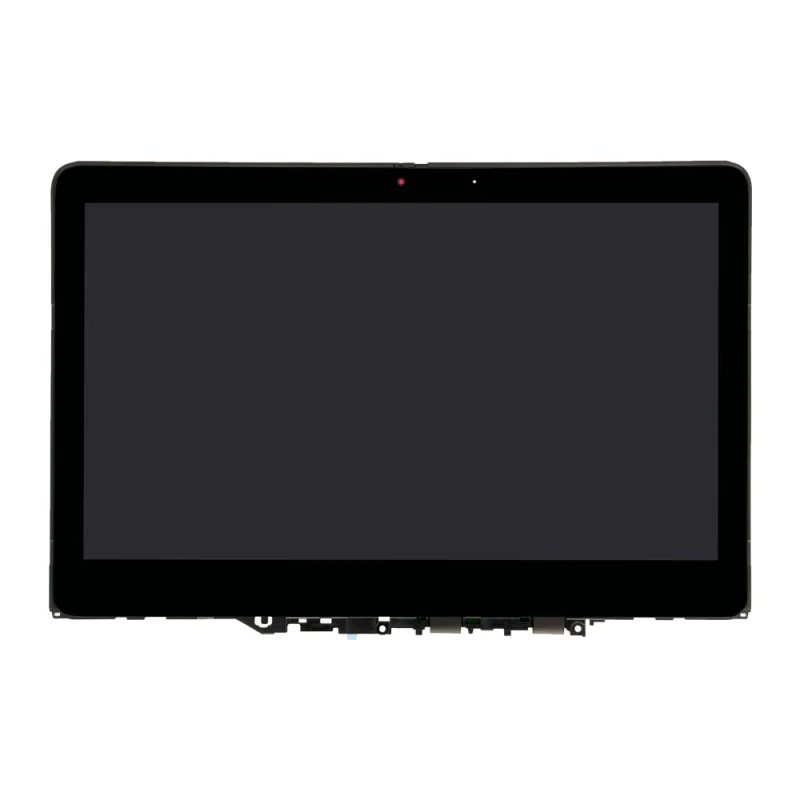Table of contents:
Step-by-Step Instructions for Laptop Screen Replacement
Essential Tools for DIY LCD Screen Replacement
Precautions to Avoid Damage During LCD Touch Screen Installation
When to Call a Pro: Installation Mistakes to Avoid
Step-by-Step Instructions for Laptop Screen Replacement
Replacing an LCD touch screen requires precision and care. Start by powering down your laptop completely and unplugging it. Remove the battery (if possible) to avoid electric shock. Use a small screwdriver to carefully remove the screws holding the screen bezel in place. Gently separate the bezel from the frame to reveal the damaged screen. Disconnect the screen's cables, including the ribbon cable and any smaller connectors, taking note of how they're attached. Once disconnected, unscrew the screen from the metal brackets. Install the new LCD screen by attaching its connectors in the same manner. Secure it with screws and reattach the bezel. Power up your laptop to ensure the new screen functions properly.
Essential Tools for DIY LCD Screen Replacement
A successful DIY laptop screen replacement starts with having the right tools and a bit of preparation. You'll need a precision screwdriver set to handle the tiny screws commonly found in laptops. A plastic pry tool is essential to carefully open the laptop casing without causing scratches or damage to the delicate components. To protect your laptop’s sensitive electronics from static electricity, an anti-static wrist strap is highly recommended. Additionally, a pair of fine-point tweezers will come in handy for handling small connectors or removing delicate cables. Don’t forget a soft microfiber cloth to keep your new screen clean and smudge-free during installation. It’s also helpful to work in a well-lit, organized space to avoid losing any screws or components during the process. Taking your time and following step-by-step instructions can ensure a smooth replacement and save you a costly repair.
Precautions to Avoid Damage During LCD Touch Screen Installation
Handling a laptop screen requires extra care and delicacy to ensure no damage occurs during the process. Always work on a flat, stable surface to prevent accidental drops or unnecessary movement while handling the screen. It’s also important to use an anti-static wrist strap to protect your laptop’s sensitive electronics from static discharge, which can cause serious and even permanent damage. When securing the screen in place, avoid over-tightening screws, as this can crack the new screen or damage its frame, leading to costly repairs. Handle the screen carefully by its edges only, as touching the display surface can leave fingerprints or smudges that are hard to clean and may interfere with the screen's clarity and functionality. Take your time, follow instructions, and ensure all tools are clean and appropriate for the task to achieve the best results.
When to Call a Pro: Installation Mistakes to Avoid
DIY installation is not for everyone, and it’s important to know when to seek professional help. If you encounter resistance while removing screws, bezels, or connectors during the process, stop and assess the situation carefully. Forcing components can lead to permanent damage. Additionally, if you experience issues like flickering screens, poor display quality, or touch responsiveness problems after installation, it’s a clear sign that something may have gone wrong during the process. Attempting to troubleshoot these issues without the right expertise or tools can make the problem worse, potentially causing further damage to your device and resulting in higher costs for repairs or even the need for a full replacement. To avoid these risks, consider reaching out to professional services that specialize in these repairs. Many professionals offer reliable parts and models, such as the "Lenovo 300e Yoga Chromebook Gen 4" LCD touch assembly replacement. Such services often include warranties, ensuring peace of mind, and customer support to guide you through the process if needed. Investing in professional assistance can save you time, stress, and money in the long run.
Maintaining and repairing your devices doesn’t have to be a stressful experience. By seeking professional services and reliable replacement parts, you can extend the life of your equipment and restore functionality with ease. Choosing high-quality components, such as the "Lenovo 300e Yoga Chromebook Gen 4" LCD touch assembly, ensures durability and long-term performance. Always prioritize expertise and warranties to protect your investment, giving you confidence and peace of mind. Proper care and informed decisions will keep your devices operating efficiently for years to come.


No comments:
Post a Comment